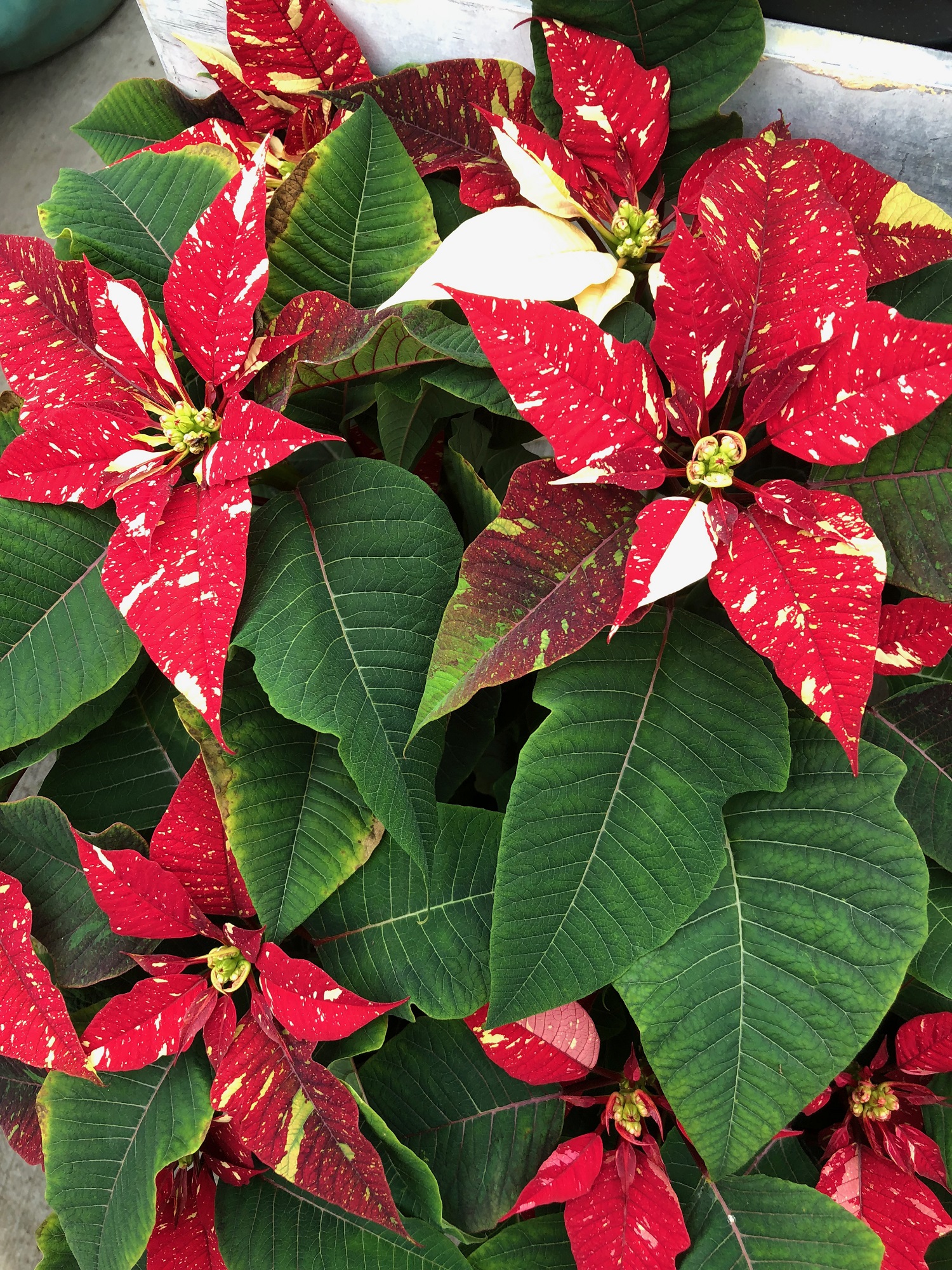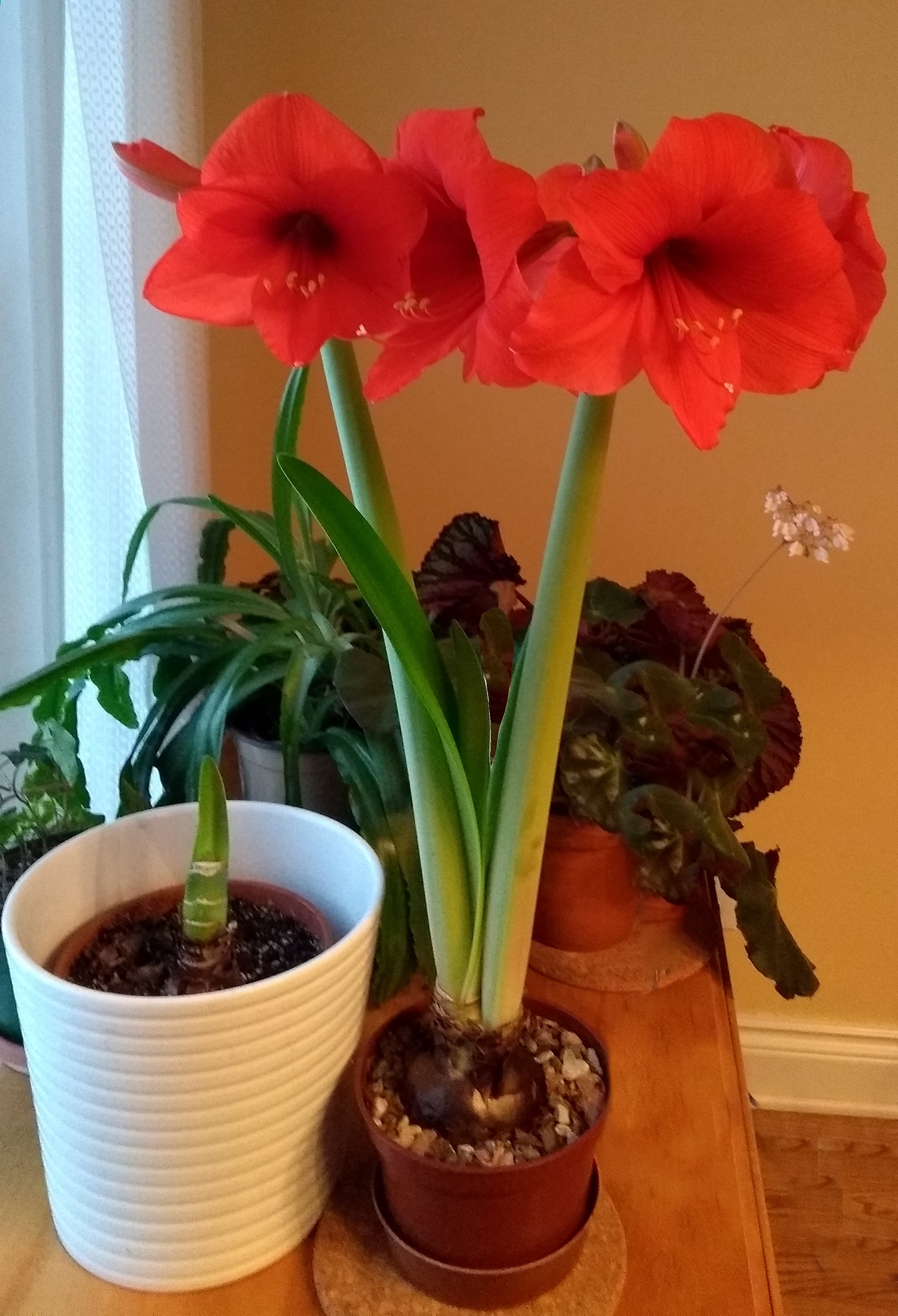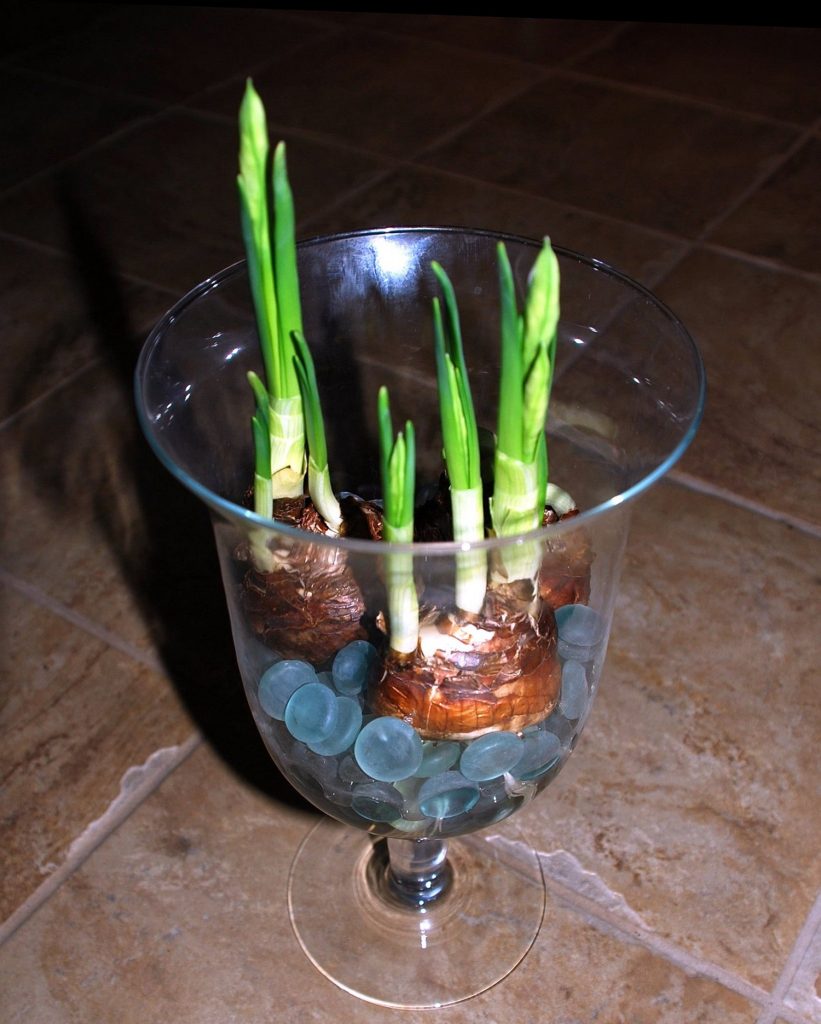In the Garden
By Denise Bonomo
How to keep your favourites healthy
The festive red and green flowers and foliage of poinsettia, Christmas cactus and amaryllis make them ‘Deck the Hall’ favourites for the holiday season. Many people buy new plants each year and dispose of them when the blooms fade. They could, however, be brought back to full flower annually with some tender loving care.
All three of these plants originate in sub-tropical to tropical environments. In order for them to bloom annually, they have quite specific temperature and light requirements. Poinsettia and amaryllis plants also do best with an outdoor, sunny summer vacation.
As in all gardening endeavours, start by selecting healthy plants when purchasing. Here are some strategies to keep them healthy year-round.

Poinsettia
(Euphorbia pulcherrima)
Choose poinsettias with deep green leaves and brightly coloured bracts. Stay away from plants with yellow pollen already on the leaves and ‘flowers’ as this indicates the plant is too mature to last much longer. Yellow leaves usually indicate a lack of light, overwatering or insufficient nitrogen.
Keeping the plant healthy during its first season requires regular watering, once a week fertilizing (20-20-20 or 20-5-10) and a sunny window, away from drafts. Remove the coloured foil that is often on the
outside of the pot as it traps water.
After blooming, leaves and bracts will drop off naturally. At that time, you should cut the plant back to 15 centimetres, stop watering and fertilizing and let it rest in a dark, cool environment. Check it every couple of weeks and water just enough to keep the stem from shrivelling. In June, gently pull the plant out of the pot, rinse off the soil freeing the roots and replant outdoors in rich soil. Once September arrives, dig up the plant and repot it in fresh soil. Choose a pot one size larger than the original container. Put the plant in a carton with a lid and place it in a location where it can be kept in dark for 14 hours per day. Bring it out to a sunny draft-free location for 10 hours each day. Follow this routine
for eight to 10 weeks and the coloured bracts will begin to appear and you will be rewarded for the TLC
you have provided.
 Christmas Cactus
Christmas Cactus
(Schlumbergera bridgesii)
Be careful about buying a blooming Christmas cactus from mass displays by the front doors of a superstore—it will soon drop all its blossoms when you get it home. Because they are called
“cactus,” many people think they must thrive in poor soil and the hot dry conditions brought about by electric baseboard or forced air heating. In nature, they actually live in tropical rainforest treetops nestled into moss and decayed leaves.
Care for these imports requires bright, indirect light and moist rich soil, preferably watered with melted snow warmed to room temperature.
Like the poinsettia, getting this plant to rebloom involves specific light and temperature conditions. Ideally, at the beginning of October, Christmas cacti should be moved to an environment that
provides cool (10-12°C) temperatures and 14 hours of complete darkness each night. You could make good use of an unplugged summer beer fridge to house your finicky houseplant each night. During the day, bring it out into a bright, cool window (21- 24°C) for 10 hours. By the beginning of December, you should be rewarded with healthy flower buds that will burst intobloom just in time to greet your holiday visitors.
Amaryllis
(Hippeastrum)
Bright colourful trumpets perched atop a long sturdy stem can almost be heard heralding the holiday season. In fall, have you noticed in your grocery store aisles, the tidy square boxes decked out with pictures of the amaryllis? The package contains a large bulb, a plastic pot and a bag of soil. In mid-October, put some soil into the bottom of the pot, add the bulb and top it up with more soil, leaving the top and ‘shoulders’ of the bulb exposed. Put the pot in a sunny window, water sparingly and wait. Enjoy the blooms!
To bring the bulb into bloom again the following year, flower stems should be cut back to about five centimetres above the bulb, being careful not to damage the foliage. Leave it in a sunny window, water it each time the soil dries out and apply a water-soluble houseplant fertilizer about once every month. Photosynthesis in the leaves is feeding the bulb for next year.
After the risk of frost, bring the plant outside each day, first into the shade, then gradually move it to sunnier locations. In June, dig a hole in a sunny location, remove the bulb from the pot and
plant it.
Water during dry weather and fertilize a couple of times a month through July. When the foliage fades, lift the bulb, remove the leaves and bring it inside and put it in a cool dark spot to rest. In mid-October, plant it in fresh soil, start watering and wait for the new buds to form.
Plant parents who take on the commitment to care for their botany babies can derive great pleasure and pride when they mature into full bloom year after year. For any gardener, these plants help to celebrate festive, happy holidays.
Denise Bonomo is a retired public health nurse who moved to Ottawa in 2014. She had large perennial gardens at her home in Brockville, but now lives in an apartment condo. Needing a soul soother during the Covid pandemic, she decided to refurbish a neglected garden at her church, Kitchissippi United. This is where she became acquainted with the Master Gardeners of Ottawa-Carleton
 Another favourite bulb for the holiday
Another favourite bulb for the holiday
Fragrant paperwhite narcissus thrives outside in warmer climates but, in colder zones, are frequently planted indoors in time to bloom during the holiday season. Growing them hydroponically saves the mess of using potting soil.
Start with a solid bottom container with a wide mouth—about 25 centimetres. Fill it one third full of marbles, river stone or tumbled glass.
Sit up to eight large bulbs, pointed tips up, on top of the stones, all at the same depth. Fill in with more stones until the bulbs are almost buried and
firmly in place. Add water, but only up to the bottom of the bulbs. It is very important that you keep the water at this level precisely since wet bulbs will rot. Keep the container in a cooler place (12-15°C) for two weeks while roots develop and then move it to a bright warm spot. They will bloom in another two to four weeks.
Paperwhites get leggy if their environment is too dark and warm. Forced to grow in an unnatural state, these plants, like some of us, are drawn to drink! Researchers at Cornell University found they could keep paperwhites shorter by watering them with a five per cent alcohol solution. (That’s about one part alcohol to seven parts water.)
Unlike poinsettias and amaryllis, paperwhites will not bloom again for a second year. Compost the bulbs and buy fresh ones next fall.






